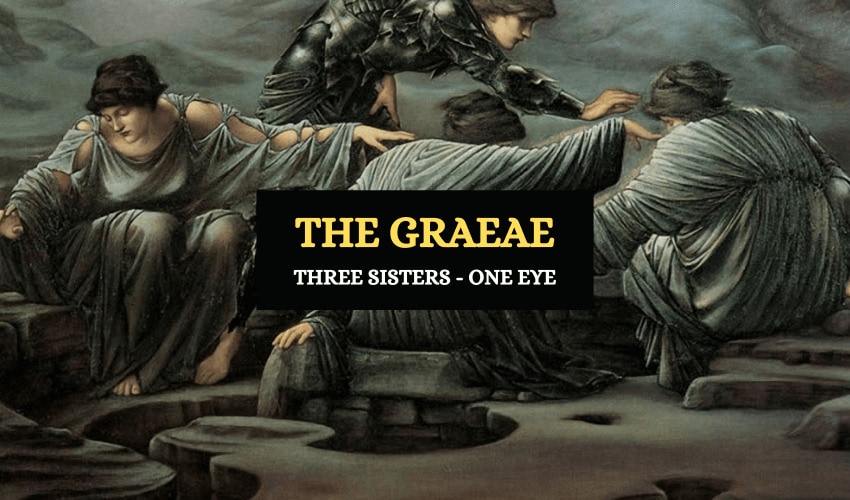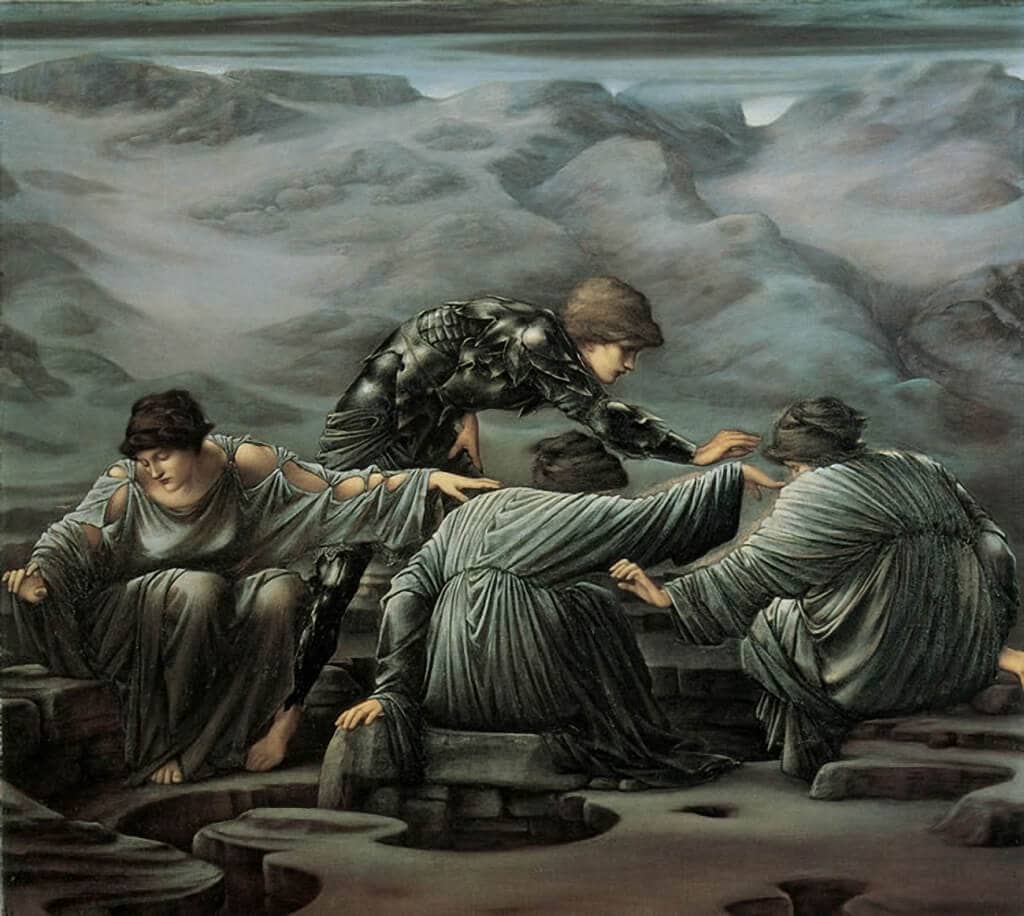
Table of Contents
In Greek mythology, the Graeae were three sisters known for appearing in the myths of the legendary hero Perseus. The Graeae are side characters, only mentioned in reference to a hero’s quest or as an obstacle to overcome. However, they’re a testament to the imaginative and unique myths of the ancient Greeks. Let’s take a look at their story and the role they played in Greek mythology.
The Origin of the Graeae
The Graeae were born to the primordial sea deities Phorcys and Ceto which made them sisters of several other characters, closely associated with the sea. In some versions, their siblings were the Gorgons, Scylla, Medusa and Thoosa.
The three sisters were called by many names including ‘The Grey Sisters’ and ‘The Phorcides’. The most common name for them however was the ‘Graeae’ which was derived from the Proto-Indo-European word ‘gerh’ meaning ‘to grow old’. Their individual names were Deino, Pemphredo and Enyo.
- Deino, also called ‘Dino’, was the personification of dread and the anticipation of horror.
- Pemphredo was the personification of alarm.
- Enyo personified horror.
Although there were originally three Graeae sisters as mentioned in the Bibliotheca by Pseudo-Apollodorus, Hesiod and Ovid speak of only two Graeae – Enyo, the waster of cities and Pemphredo, the saffron-robed one. When spoken of as a trio, Deino is sometimes replaced with a different name ‘Persis’ which means destroyer.
Appearance of the Graeae
The appearance of the Graeae sisters was often described as very unsettling. They were old women whom many referred to as ‘sea hags’. It’s said that when they were born they were completely grey in color and looked like they were very old.
The most obvious physical feature that made them easy to identify was the single eye and tooth they shared between them. They were completely blind and all three of them relied on the one eye to help them see the world.
However, descriptions of the Graeae varied. Aeschylus described the Graeae not as old women but as monsters shaped like Sirens, with the arms and head of old women and the bodies of swans. In Hesiod’s Theogony, they were described as being beautiful and ‘fair-cheeked’.
It’s said that the Graeae were initially personifications of old age, possessing all the kindly, benevolent attributes which come with aging. However, over time they came to be known as misshapen old women who were hideously ugly with only one tooth, the magical eye and a wig given to them to share.
The Role of the Graeae in Greek Mythology
According to the ancient sources, in addition to their individual roles, the Graeae sisters were the personifications of the white foam of the sea. They acted as servants to their sisters and were also the keepers of a great secret – the location of the Gorgon Medusa.
Medusa, once a beautiful woman, had been cursed by the goddess Athena after Poseidon seduced her in Athena’s temple. The curse turned her into a hideous monster with snakes for hair and the ability to turn anyone who gazed upon her into stone. Many had tried to kill Medusa but none were successful until the Greek hero Perseus stepped forward.
As guardians of their Gorgon sisters, the Graeae took turns seeing through the eye and since they were completely blind without it they were afraid that someone would steal it. Therefore, they took turns sleeping with their eye to protect it.
Perseus and the Graeae

The secret the Graeae were keeping was an important one for Perseus, who wanted to bring Medusa’s head back to King Polydectes as requested. Perseus traveled to the Island of Cisthene where the Graeae were said to have lived and approached the sisters, asking them for the location of the caves where Medusa hid.
The sisters weren’t willing to give away Medusa’s location to the hero, however, so Perseus had to force it out of them. This he did by catching their eye (and some say the tooth as well) as they were passing it to one another and threatening to hurt it. The sisters were terrified of going blind if Perseus damaged the eye and they finally revealed the location of Medusa’s caves to the hero.
In the most common version of the tale, Perseus gave the eye back to the Graeae once he received the information he needed, but in other versions, he threw the eye into Lake Tritonis, which resulted in the Graeae being permanently blinded.
In an alternate version of the myth, Perseus asked the Graeae not for Medusa’s location but for the location of three magical objects that would help him to kill Medusa.
The Graeae in Popular Culture
The Graeae have appeared several times in supernatural television shows and films such as Percy Jackson: Sea of Monsters, in which they’re seen driving a modern taxicab using their one eye.
They also appeared in the original ‘Clash of the Titans’ in which they killed and ate lost travelers who came upon their cave. They had all their teeth and shared the famous magical eye which gave them not only sight but magical power and knowledge as well.
In Brief
The Graeae sisters aren’t the most popular characters in Greek mythology because of their unpleasant appearance and their (sometimes) evil nature. However, as unpleasant as they might have been, they played an important role in the myth of Perseus and Medusa for if it wasn’t for their help, Perseus might never have found the Gorgon or the objects he needed to slay her.








